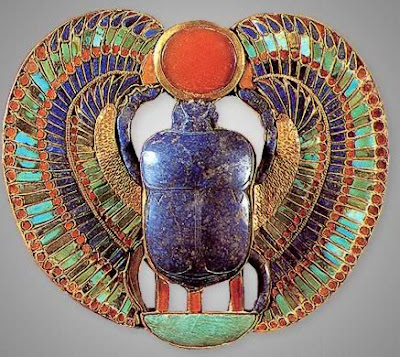 Pectoral is inlaid with colored glass and semi-precious stones. The motif of the scarab pushing solar disc is elaborated to form "Nebkheprure". | The earlier Badarian culture inhabited Upper Egypt between 4500 BC and 3200 BC. From 2950 BC to the end of Pharaonic Egypt in 395 AD, there were a total of thirty-one dynasties, spanning 3,345 years. |  Pectoral of King Senusret II from the tomb of Sit-Hathor Yunet, daughter of Senusret II. |
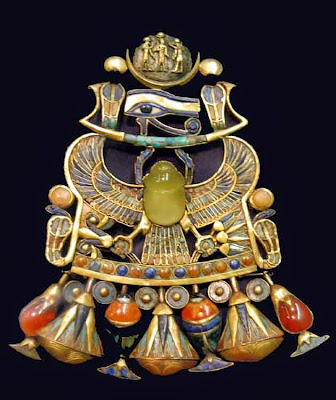 A rebus pectoral scarab worn by King Tut-ankh-amun from Thebes. It symbolizes the birth of the moon and the sun and was part of the king's coronation regalia. |  Queen Amanishaketo's bracelet |  19th Dynasty inlaid diadem, or wig. |
 | Winged Isis pectoral 538–519 B.C. gold. The ancient Egyptians placed great importance on the religious significance of certain sacred objects, which was heavily reflected in their jewelry motifs. Gem carvings known as "glyptic art" typically took the form of anthropomorphic religious symbols. |
 The collar of Khnumet | The Egyptian lapidary would use emery fragments or flint to carve softer stones, while bow-driven rotary tools were used on harder gems. Jewelry coloration was extremely important to the ancient Egyptians, and each color had a different symbolic meaning. | 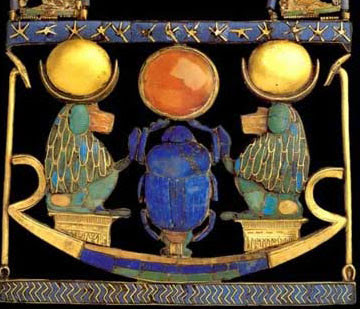 |
 According to the "Book of the Dead" a deceased person would wear a red-colored necklace which was meant to satisfy the God Isis' need for blood. | Jewelry that featured the color green was meant to symbolize fertility and the success of new crops. 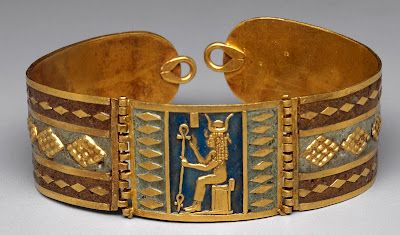 | 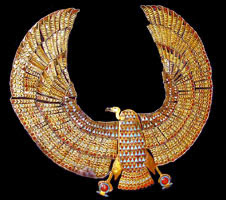 |
 | One insignificant king's treasure remained intact for thousands of years. That king was the now famous Pharaoh Tutankhamun, son of either Amenhotep III or Akhenaten. His short reign as Pharaoh began at age 9. Although he ruled for only 9 years (1336—1327 BC), he was able to amass a modest legacy of wealth and treasure that lives on today. |  Pectoral belonging to Tutankhamun |
  |   |   |

No comments:
Post a Comment